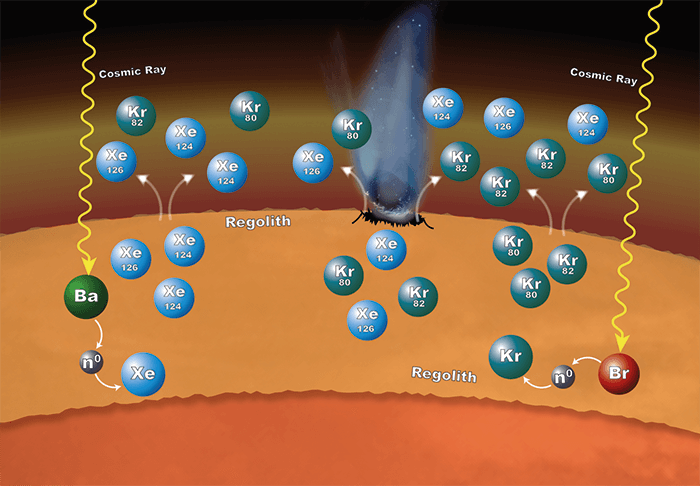The chemistry of Mars is being analyzed by a suite of instruments aboard the Curiosity Rover, providing further insight into the planet’s atmospheric evolution – and its habitability. SAM, which stands for Sample Analysis at Mars, can “sniff” the atmosphere directly or collect solid samples. For this research, (semi-)static mass spectrometry was used to measure trace levels of all the stable isotopes of krypton and xenon in the Martian atmosphere – in situ – something that has never been done before.
“In the case of Mars, the heavy noble gases can teach us about planetary atmosphere evolution and loss,” says astrobiologist Pamela Conrad, SAM’s deputy principal investigator at NASA’s Goddard Space Flight Center. “This is key to understanding planetary habitability.” The measurements are also important to verify whether the trapped ancient atmosphere in Mars meteorites, which can be measured directly, is representative of the planetary atmosphere. “We saw an enrichment of the lighter isotopes of Kr and Xe over what we would have predicted based upon the primordial inventory of those elements for the terrestrial planets,” Conrad says. “We did not know why – so we developed a model to try and explain it (1).”

Conrad says the analysis of Xe and Kr only paints part of the picture. “Noble gases (which are, of course, by definition, inert) are not subject to processing over time in the same way that other chemical elements are,” she says. “For example, chlorine can make salts, which can dissolve and leave ions in water. Living things favor the lighter, stable isotopes of chemicals they require when available. So isotopically light oxygen, carbon, sulfur, and so on can be a biosignature. But temperature also affects these elements, so to understand whether we are looking at the effects of biology or of weather (and other geological processes), we need to take a broad view of a planet’s inventory of gases.” And the next focus of their inventory will be reactive gases. “Measuring methane, oxygen, and CO2 will help us try to understand seasonal variations,” Conrad says. “There are still plenty of mysteries about the relationship between the atmospheres of Mars, Earth, and Venus to discover!”
References
- P.G. Conrad et al, “In situ measurement of atmospheric krypton and xenon on Mars with Mars Science Laboratory,” Earth Planet Sci Lett, 454, 1–9 (2016).




